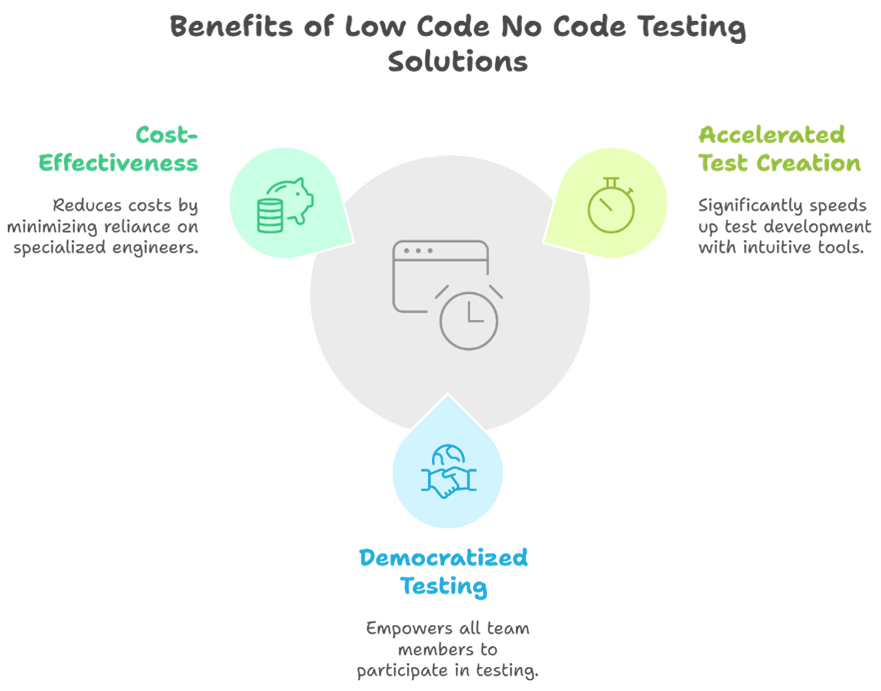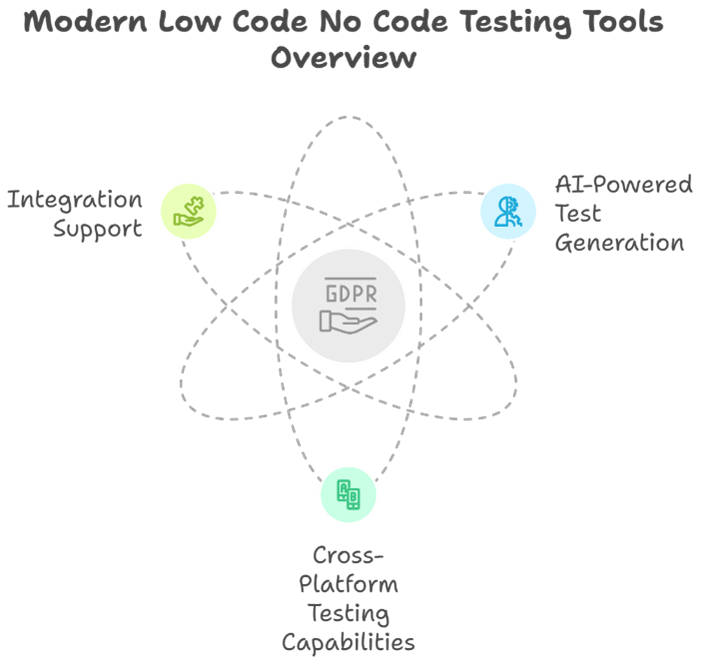In today’s fast-paced software development landscape, organizations are constantly seeking efficient ways to accelerate their testing processes without compromising quality. Low code no code test automation tools have emerged as game-changers, revolutionizing how teams approach quality assurance. Let’s dive deep into understanding these powerful solutions and their impact on modern testing practices.
What are Low Code No Code Test Automation Tools?
Low code no code test automation tools are innovative platforms that enable teams to create and execute automated tests with minimal to no programming knowledge. These tools utilize intuitive visual interfaces, drag-and-drop functionality, and AI-powered features to make test automation accessible to everyone, from business analysts to manual testers.
Why Choose Low Code No Code Testing Solutions?

1. Accelerated Test Creation
- Reduce test creation time by up to 80%
- Intuitive visual interfaces for quick test building
- Ready-to-use templates and pre-built components
2. Democratized Testing
- Enable non-technical team members to contribute to testing
- Bridge the gap between business and technical teams
- Foster collaboration across departments
3. Cost-Effectiveness
- Minimize dependency on specialized automation engineers
- Reduce training and onboarding time
- Lower maintenance costs compared to traditional frameworks
Key Features of Modern Low Code No Code Testing Tools

1. AI-Powered Test Generation
- Natural language processing for test creation
- Smart element recognition
- Self-healing test scripts
2. Cross-Platform Testing Capabilities
- Web application testing
- Mobile app testing
- API testing
- Desktop application testing
3. Integration Support
- Seamless CI/CD pipeline integration
- Popular tool integration (JIRA, Jenkins, Git)
- Test management platform connectivity
Best Practices for Implementation

1. Start Small and Scale
- Begin with simple test scenarios
- Gradually expand test coverage
- Build reusable test components
2. Maintain Test Organization
- Create clear naming conventions
- Structure tests logically
- Document test cases effectively
3. Regular Maintenance
- Schedule periodic test reviews
- Update tests with application changes
- Monitor test execution results
Real-World Success Stories
At ideyaLabs, we’ve witnessed numerous organizations achieving remarkable results with low code no code test automation tools:
- A fintech client reduced testing time by 70%
- An e-commerce platform increased test coverage from 40% to 95%
- A healthcare provider automated 500+ test cases in just three months
Choosing the Right Tool for Your Organization
Consider these factors when selecting a low code no code test automation tool:
- Ease of use and learning curve
- Integration capabilities with existing tools
- Scalability and performance
- Support and community resources
- Pricing and ROI potential
Future of Low Code No Code Test Automation
The future of testing is increasingly moving toward low code no code solutions. With advancing AI capabilities and improved user interfaces, these tools will continue to evolve, making test automation more accessible and efficient than ever before.
Conclusion
Low code no code test automation tools are transforming the software testing landscape, enabling organizations to achieve faster release cycles, improved quality, and better collaboration between teams. As experts in quality assurance, ideyaLabs recommends embracing these tools to stay competitive in the rapidly evolving digital landscape.